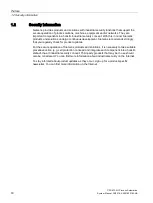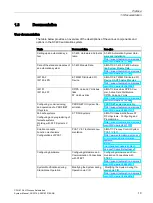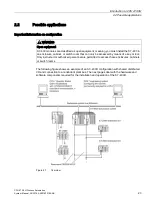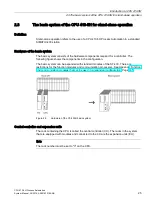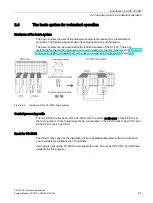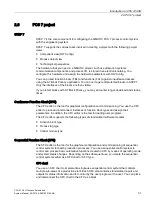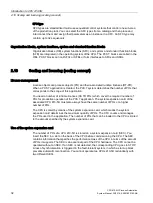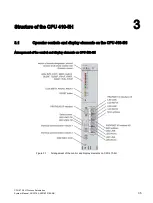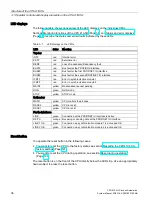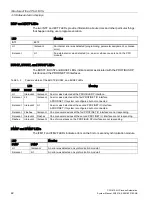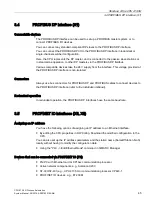
Introduction to CPU 410-5H
2.10 Scaling and licensing (scaling concept)
CPU 410-5H Process Automation
32
System Manual, 09/2014, A5E31622160-AB
SFC type
SFC types are standardized multi-use sequential control systems that control one sub-area
of the production plant. You can select the SFC types from a catalog and then place and
interconnect them and assign their parameters as an instance in a CFC. An SFC type may
contain up to 32 sequencers.
Organization blocks, system functions, system and standard function blocks
Organization blocks (OB), system functions (SFC), and system and standard function blocks
(SFB) are integrated in the operating system of the CPU. The PCS 7 blocks are called in the
OBs. PCS 7 blocks can call SFCs or SFBs or form interfaces to SFCs and SFBs.
2.10
Scaling and licensing (scaling concept)
License management
License objects are process objects (PO) and their associated runtime licenses (RT-PO).
When a PCS 7 application is created, the PCS 7 system determines the number of POs that
corresponds to the scope of this application.
You need a number of runtime licenses (AS TR POs) which cover the required number of
POs for productive operation of the PCS 7 application. The system expansion card of the
associated CPU 410-5H must also always have the same number of POs or a higher
number of POs.
The CPU is scaled by means of the system expansion card, which means the system
expansion card determines the maximum quantity of POs. The CFC counts and manages
the POs used in the application. The number of POs that can be loaded to the CPU is limited
to the amount specified by the system expansion card.
Use of the system expansion card
The number of POs of a CPU 410-5H is stored on a system expansion card (SEC). You
insert the SEC in a slot on the back of the CPU before commissioning the CPU. The SEC
contains information that specifies the performance class of the CPU in terms of the amount
of POs it supports. The SEC is an essential part of the CPU hardware. The CPU cannot be
operated without an SEC. If an SEC is not detected, the corresponding CPU goes to STOP.
A loss of synchronization is triggered in the fault-tolerant system, in which a start-up block
prevents automatic reconnection. You cannot operate two CPUs 410-5H redundantly with
two different SECs.

